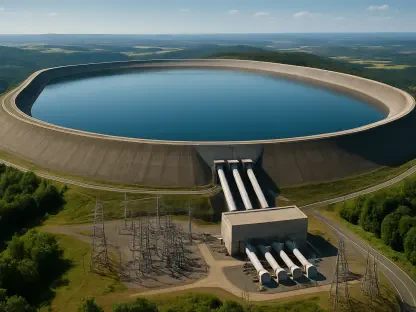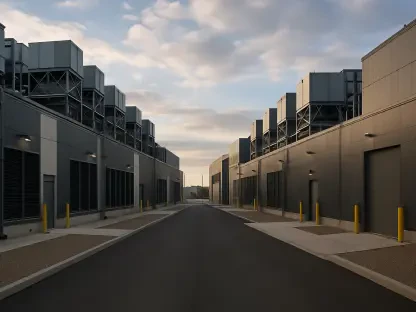Tri-State Generation and Transmission Association recently achieved a significant milestone with the completion of the Burlington-Lamar electricity transmission line in eastern Colorado. This 230-kilovolt line extends over 112 miles and includes substations in both Burlington and Lamar. Launched in February 2022, this project is integral to Tri-State’s broader Eastern Colorado Transmission Expansion plan, which aims to enhance the reliability, resilience, and affordability of power for its member associations. With the potential to add more than 700 megawatts of additional generation interconnections, this development represents a crucial step forward in bolstering Colorado’s energy infrastructure.
Enhancing Reliability and Resilience
Impact Across Multiple Regions
The expansion project is designed to significantly strengthen the interconnected transmission system’s reliability, benefiting several member associations throughout Colorado. Key areas like Pueblo West, La Junta, Hugo, Fort Morgan, and Limon stand to gain from the improved infrastructure. Initially proposed in the early 2000s, the project was reevaluated in 2016 to ensure it met contemporary energy needs and standards. Development commenced in earnest in 2020, with Tri-State gathering insights and feedback from a diverse group of stakeholders.
To ensure a thorough assessment and optimal decision-making, Tri-State engaged approximately 60 stakeholders from 24 different entities as part of the Colorado Coordinated Planning Group. A series of meetings held in 2021 allowed these stakeholders to explore and evaluate alternative solutions, resulting in the identification of 15 potential projects. Among these, the chosen ones were deemed the most cost-effective while adequately fulfilling the association’s requirements. This meticulous approach underscores Tri-State’s commitment to not only enhancing reliability but also prioritizing cost-efficiency.
Navigating Regulatory Requirements
The construction of the Burlington-Lamar transmission line necessitated securing permits from over a dozen local, state, and federal agencies. This comprehensive permitting process involved key entities such as the Colorado Department of Transportation, Colorado Parks and Wildlife, and the U.S. Fish and Wildlife Service, among others. Securing these permits was a critical step in ensuring that the project adhered to all regulatory requirements, safeguarding both environmental and community interests. Notably, approximately 95% of the transmission line was developed on private land, intersecting over 100 individual parcels.
This extensive collaboration and regulatory compliance highlight the complexity and scale of the project. The successful navigation of these challenges serves as a testament to Tri-State’s ability to manage large-scale infrastructure developments effectively. By balancing regulatory demands with the technical requirements of the project, Tri-State has laid a solid foundation for future expansions and improvements in the energy transmission network.
Future Projects and Long-Term Benefits
Upcoming Transmission Lines
As part of its ongoing commitment to upgrading its transmission network, Tri-State has already set its sights on several additional projects. One such initiative is the construction of a new 31-mile transmission line connecting the Boone Substation to the Huckleberry switching station. This project is slated for completion by 2026 and is anticipated to play a key role in meeting the growing energy demands of the region. Another significant project involves a 72-mile transmission line linking the Big Sandy Substation to the Badger Creek switching station, expected to become operational by 2028.
These upcoming projects reflect Tri-State’s proactive approach to addressing future energy needs and ensuring that its transmission network remains robust and efficient. By strategically planning and executing these expansions, Tri-State aims to minimize system congestion, facilitate the integration of new energy resources, and ultimately enhance service reliability for its member associations. The long-term benefits of these efforts will be felt across Colorado, paving the way for a more resilient and adaptable energy infrastructure.
Commitment to a Robust Energy Future
Tri-State Generation and Transmission Association recently marked an important achievement by completing the Burlington-Lamar electricity transmission line in eastern Colorado. This new 230-kilovolt line stretches over an impressive 112 miles, connecting substations located in Burlington and Lamar. Initiated in February 2022, the project is a key component of Tri-State’s larger Eastern Colorado Transmission Expansion plan. The primary goal of this extensive plan is to improve the reliability, resilience, and cost-effectiveness of power for its member associations. Additionally, this line project has the capacity to facilitate more than 700 megawatts of new generation interconnections. This significant development is a vital step in strengthening Colorado’s energy infrastructure, ensuring that the region can meet its power needs more efficiently and reliably. Overall, this achievement underscores Tri-State’s commitment to enhancing power delivery and supporting the energy needs of eastern Colorado for years to come.









